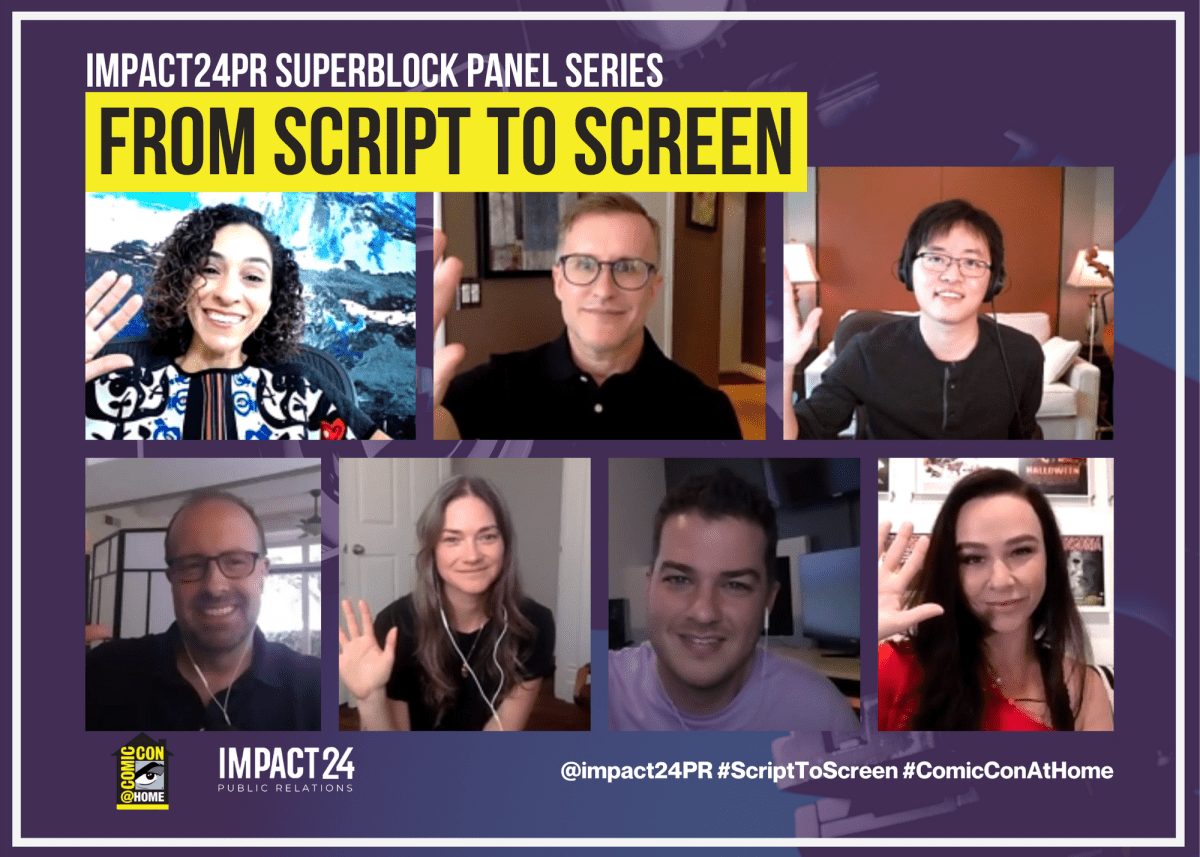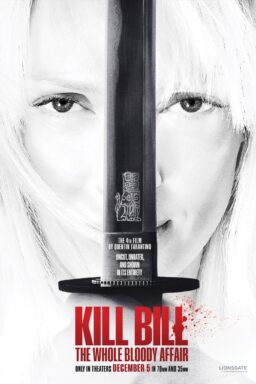San Diego Comic-Con is doing its best to emphasize the advantages of this year’s virtual gathering with a cheeky video greeting promising “No lines! Free parking! Comfy chairs!” But for those who want to make the virtual a bit more analog, there is a pdf of the annual souvenir program (you can buy a copy on paper if you like) and you can even download a real-life badge to wear as you peer into your laptop to see Zoom panels with members lined up in boxes like The Brady Bunch.
Two panels on opening day featured behind-the-screen talent who talked about inspirations, challenges, lessons learned, and what production might be like in a pandemic world of masks and hand sanitizers, a storyline that just might be too unbelievable to pass muster even in the SDCC world of fantasy and sci-fi.
Three spouse-teams spoke about collaborating on projects for film, television, and gaming. Supervising editor David Nordstrom and his wife producer/supervising editor Arielle Kilker, whose projects together include the Netflix documentary “Cheer,” admitted that they had to start commuting separately to help give them some boundaries between home and work. But, like the other couples, Nordstrom said “part of the joy of being part of a collaborative team is that it is less lonely. Editing is very solitary work, so it’s nice to have someone who gets it.” “They say collaboration is like a good marriage,” Nordstrom said. On this panel it was both.

Avori and D__Rich of 303 eSports talked about the world of gaming, and their efforts to be more inclusive. Both naturally competitive, which is an asset in their jobs but not so much in their relationship, talked about learning to work as a team, to be even prouder of each other’s achievements than they are of their own.
Stunt coordinators Hiro Koda and Jahnel Curfman (“Cobra Kai,” “Stranger Things”) are strict about making sure they have regular date nights with no talking about projects. All the women on the panel talked about seeing more women and working to make things better for women in their fields. Curfman, who got her start as a gymnast who did motion capture work on “Avatar,” said, “We’re seeing a lot more women behind the scenes, grips, camera. It is so refreshing.” They provide support when they see someone who is mistreated, even if it is just to say, “I saw how he talked to you and I’m really sorry.” Still, she said, “Stunts is very much a boys club. I’m so outnumbered.” (“She holds her own,” Koda assured us.) She said that as more action roles are being written for women it gives the stunt women more opportunities as well, and better stunts, “getting away from the pretty dancer-ness, more martial arts.”
They all appreciated the kind of shorthand communication you only have with the people you trust and know best, and working as a team can bring you closer. “While you’re working on a project together,” said Curfman, “you have a common enemy.”
Scream queen actress Danielle Harris of the “Halloween” franchise moderated a panel called “From Script to Screen,” with three composers, a cinematographer, a screenwriter/director/editor, and a make-up designer. At SDCC that panel would have been in one of the smaller rooms, with room for about 150 people. Online, there were 3,125 watching as it first went “live” on the schedule and limitless more will be able to watch as it remains on YouTube.
Tirsa Hackshaw (“Jessica Jones“) talked about how working as an editor and writer made her a better director. “They are three sides of the same coin—storytelling. All have the same purpose, the same goal, to help the best story get told on camera.” She learned as an editor that “fixes in post is a real thing. If you want to be a director, do other roles. You will learn what works and doesn’t work. A thousand percent of your job is time management. If the day goes south, I know how to cheat because I know what the editor will need in that moment. Collaboration is all about trust that everyone is there to support the same story, no different agendas. Because you have that experience, you trust more easily.”
Cinematographer Catherine Lutes came into the series “Anne with an E” in the last season. The look of the earlier seasons “was a starting point but [the] showrunner was very open to changing the look to evolve with the storyline. Anne sees the world through a magical lens, to use her word, ‘romantical.’ I bring a sense of that through camera movement or special highlighting. The previous seasons were primarily set in winter but this had more summer, so we had an emotional push with sunlight and hard sun. I always try to come from the emotional place of the character.”
Ian Chen talked about how as a child in Taiwan James Horner’s scores for “The Land Before Time” and “An American Tale” inspired him, along with some of the great Asian composers. He compared creating music for television to video games. He said: “I examine themes, characters, stories, find the sounds and the thematic materials for the tone for each of the worlds. I have more time to write the music for video games, and compose in a more top down or big picture way. For TV, the overall theme is important but each scene is timed specifically to the edits and has to match the mood.”
“I was a nerd before being a nerd was cool,” said composer Devin Burrows. He and his friends watched “Twilight Zone” episodes together, and he loved Bernard Herrmann’s eerie score. He described creating the music for the horror movie “The Wretched” as “a supernatural horror film, but a throwback to movies like ‘Rear Window’ and ‘ET.'” He and directors Brett Pierce and Drew T. Pierce wanted a distinctive sound, especially for locations like the woods. “We had a sort of musical instrument casting call. They fell in love with the sarangi, an Indian boat instrument with a throaty dry sound that helps transport people into the locations. It gave the film a unique sonic tapestry.” He likes to combine orchestral and folk instruments. “I’m always experimenting with new sounds.”

Moderator Harris, who starred in Camp Cold Brook, asked composer Chad Rehmann which scene he most enjoyed working on. He said that the score in the film had to reflect the change in the characters, who “go in as skeptics and think ghosts are not real. When [Harris’ character] sees one, you can see her face go from skeptic to terror. The fun thing is we get to score it and there’s no audio we have to work around, no sound effects or dialogue. Whenever scenes start going down rabbit holes it’s fun as a composer to add to that chaos.” He said he was lucky to be able to work with the Budapest orchestra, one of the few still performing during the pandemic, though it was strange to see the musicians with masks and their chairs spread apart.
Makeup designer Burton LeBlanc described the “realism” of the makeup for “The Handmaid's Tale,” and how he will go as far as he can in the makeup trailer but is not done until he sees the look under the lights of the set and adds a few more “tweaks.” He was inspired by “Saturday Night Live” as he was growing up, and the transformations of the cast as they switched roles so many times within the same episode. He likes to work on sci-fi/fantasy projects because you can “let your imagination go completely wild.”
Hackshaw agreed about the wider range of sci-fi and fantasy. “I will always prefer it to yet another interrogation scene. The villains get to be really villainous.” She also spoke about her efforts to make her productions inclusive and beneficial to the communities where they are located. They filmed in Puerto Rico to help the recovery there and she worked with an all-female crew.
Hackshaw’s advice for getting jobs in Hollywood applies to any field. “I can’t stress enough the importance of saying yes. All experience is good experience. You will learn how to find inspiration in something you thought you had no connection do. That is a skill. Your network is your net worth and you create that network based on what you thought would never lead anywhere.”












